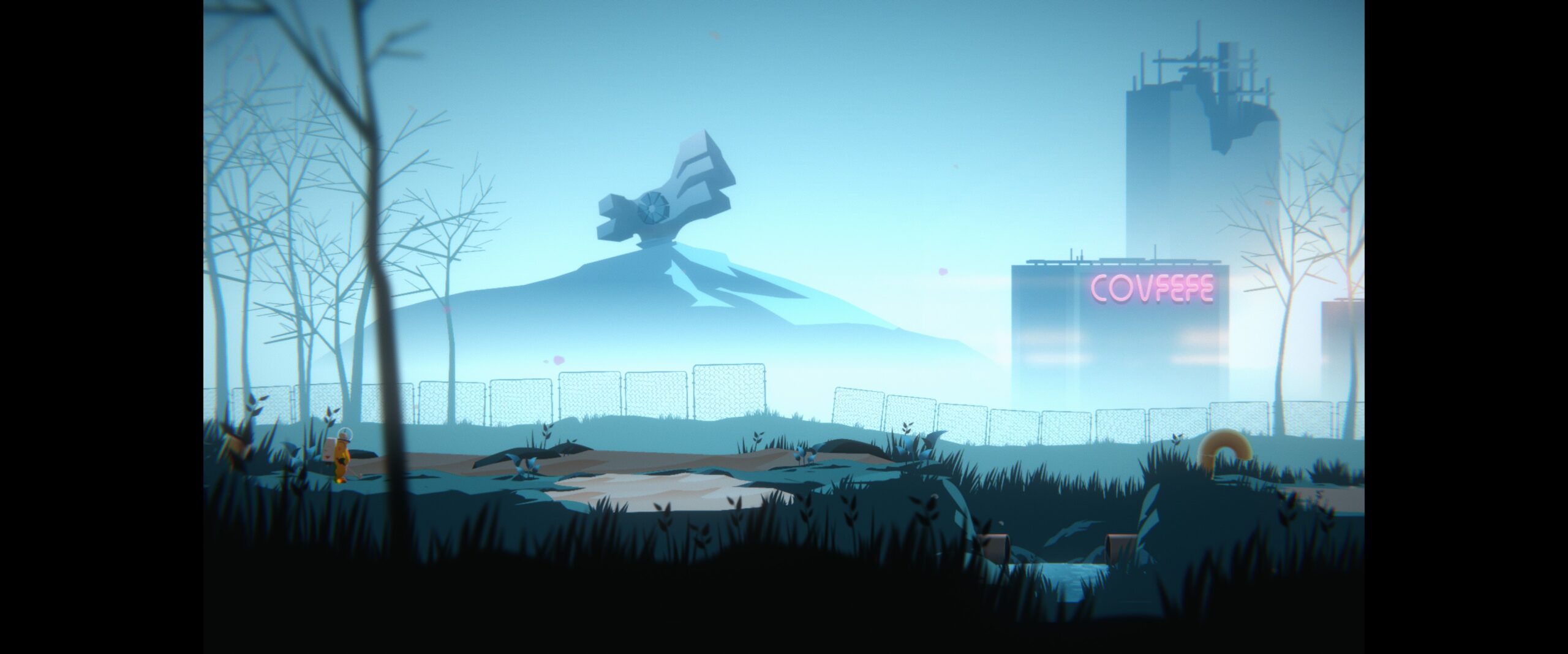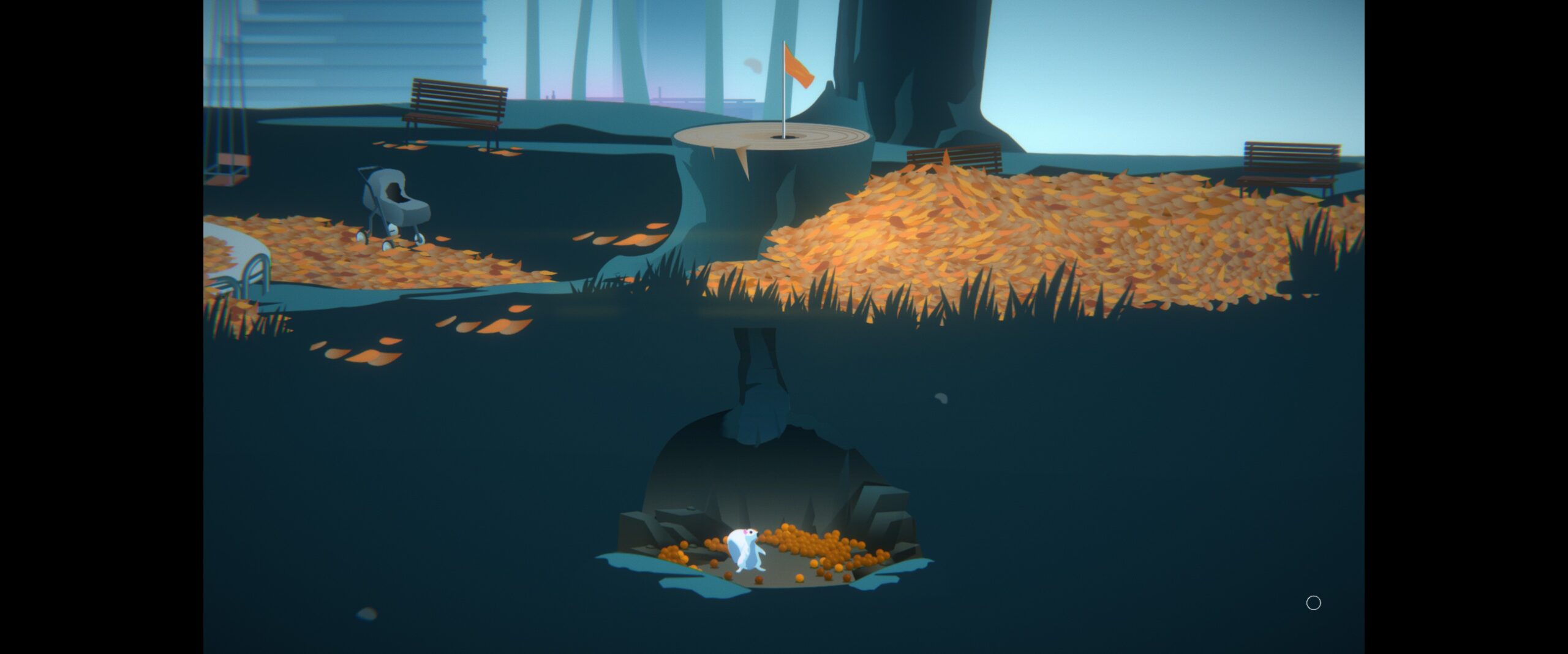Indie developers have the unenviable task of balancing what precious resources they have to create the experience they want to deliver to their audiences. This often means that, when compared to bigger developers or AAA studios, there needs to be sacrifices made in some aspects of the game to make sure the core game remains true to its vision. One of the other factors at play here is also the perception of value for your customers, which often leads to developers padding games out so that the asking price seems “worth it”. This, in my opinion, has led far too many indie developers to create games that have mechanics that get in the way of their narrative, building a game that doesn’t actually let you experience it unless you spend an unnecessary amount of time doing meaningless or pointlessly challenging tasks. This is the unfortunate fate of Golf Club Wasteland, a game that has an absolutely beautiful narrative construction that is completely and utterly decimated by its tedious, repetitive and unreliable golfing mechanics.

The Earth has suffered an ecological catastrophe, laying waste to most of civilisation. However for the lucky few, and the ultra-rich of course, they’ve been able to establish themselves on Mars in the new Tesla City, named for the famed inventor and not the car company. Those ultra rich are still looking to indulge in the finer things in life and so the Corporation of Tesla city has enabled a select few to return to Earth and play…golf. Yes that’s right, in the ruins of civilisation, the ultra-rich have still found a way to enjoy themselves in an ethically reprehensible way. So here you are, back on Earth in your space suit, taking swings and puts whilst the ruins of civilisation lie quietly in the background.
Whilst Golf Club Wasteland is a Unity game and is fully 3D it’s art style takes inspiration from the Flash games of yesteryear, with their stark boundaries, bold colours and flat design aesthetic. Knowing the game’s heritage, being a mobile game for the better part of 3 years before coming to PC last year, this makes a lot more sense, as that is a much more typical art style on the mobile platform than it is for PC born titles. The environments vary more in their composition than they do in visual elements, all of them sharing the same ruined civilisation stylings and not feeling too different from one another. This may change in the last third of the game or so, I wouldn’t know since I didn’t get there, but suffice to say the visuals suit the game well.

The mechanics are simple: get the golf ball into the hole. You’ll do this via a simple swing interface where you’ll choose your direction and power of the swing, repeating the process until you reach your goal. Attached to the simple core game loop are a number of things done for both story and gameplay purposes. As you’d expect from a golf game each hole has a par rating and, should you get in under that, you’ll unlock some entries in your diary that build out the world considerably. There’s also a handful of secrets to unlock, most of which require you to land a shot in or on a particular area. Finally, playing away in the background the entire time is Radio Nostalgia from Mars, honestly the standout part of the game which dives deep into the world as it exists today, as told by stories from survivors.
For the first half of the game or so it feels like it’s in the right place: getting par on a hole takes a bit of concerted effort to land shots correctly and chasing down secrets is harder, but not unachievable. This ensures you’ve got enough brain power left over to really pay attention to the stories from the radio as they unfold, all of which are excellently voice acted. This is not to mention some of the songs on the radio which are actual bangers. like the song Repetition, which I was grooving to the whole time it was on. However after that point the game rapidly ratchets up the challenge, and not in a good way.
The courses quickly become more complex and significantly longer, meaning that missed shots cost you an awful lot more than they ever used to. Couple this with the fact that there’s no way to either A) mulligan your current shot or B) restart the level quickly (the animations of the camera panning to the sky each time takes a good 5 seconds) means that you just end up spending a lot of time taking a single shot, fucking it up, and then waiting to take it again. I threw in the towel when the game started to require pinpoint precision to even make it through the level, not to mention the par requirements to actually, you know, get to see more of the damn story. Reading other reviews of the game I’m not alone in thinking this and, honestly, it’s not a hard problem to fix.

Just give me the option to show where my ball will end up after like, the 5th time fucking it up or when I’ve got zero hopes of reaching par. That way I can progress at my own leisure, learn the best way to approach the problem and then, if I want to, go back and do it again to unlock story components. As it stands right now the only option I have is to go through a frustrating amount of restarts or simply keep chipping away at levels and not unlocking any story items. Neither option is particularly attractive to me.
It’s a real shame as I think the storytelling and base game can work together well, as they do for a good chunk of the game. Indeed it’s done so well that I feel the world itself is very much worth exploring more as the developers have done a great job of putting together a plausible reality with many interesting story threads to pull on. The trouble is that the game itself gets in the way, taking this game from a must-play to a semi-interesting curiosity that can be easily supplanted by a YouTube video.
Rating: 7.0/10
Golf Club Wasteland is available on iOS, Android, PlayStation 4, Xbox One and PC right now for $15.00. Game was played on the PC with a total of 64 minutes play time and 33% of the achievements unlocked.



